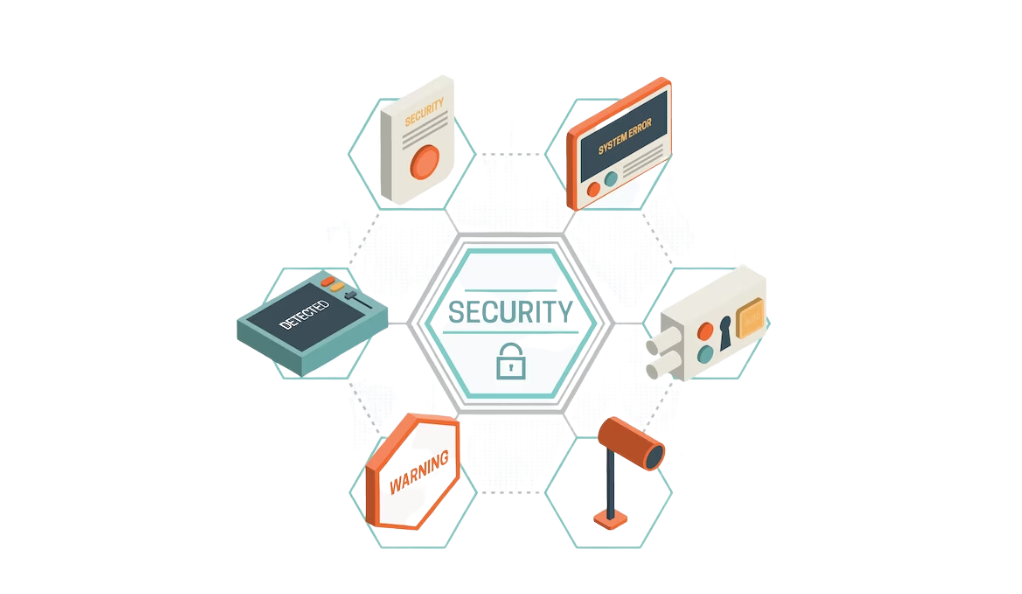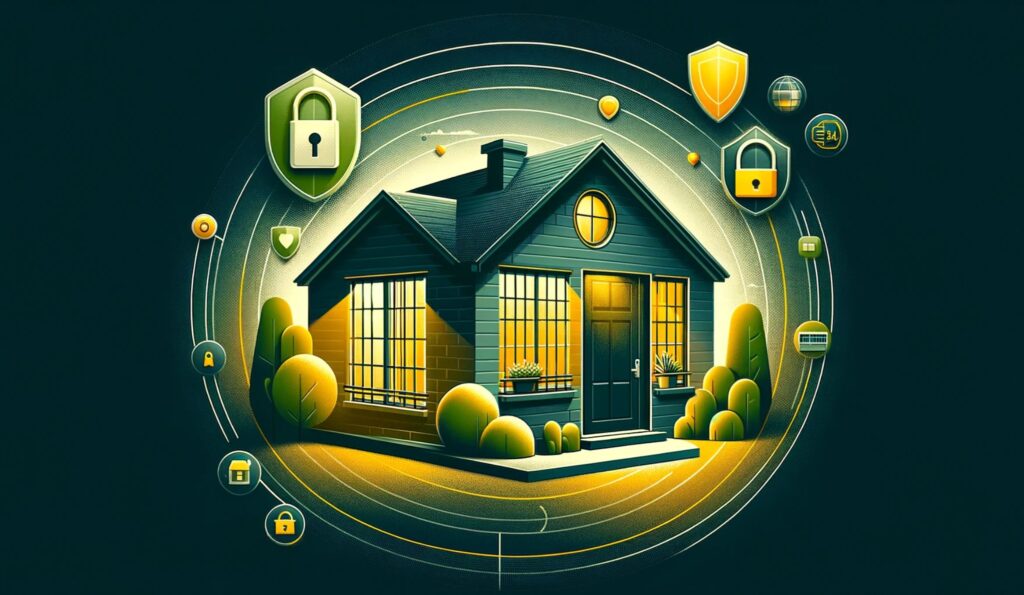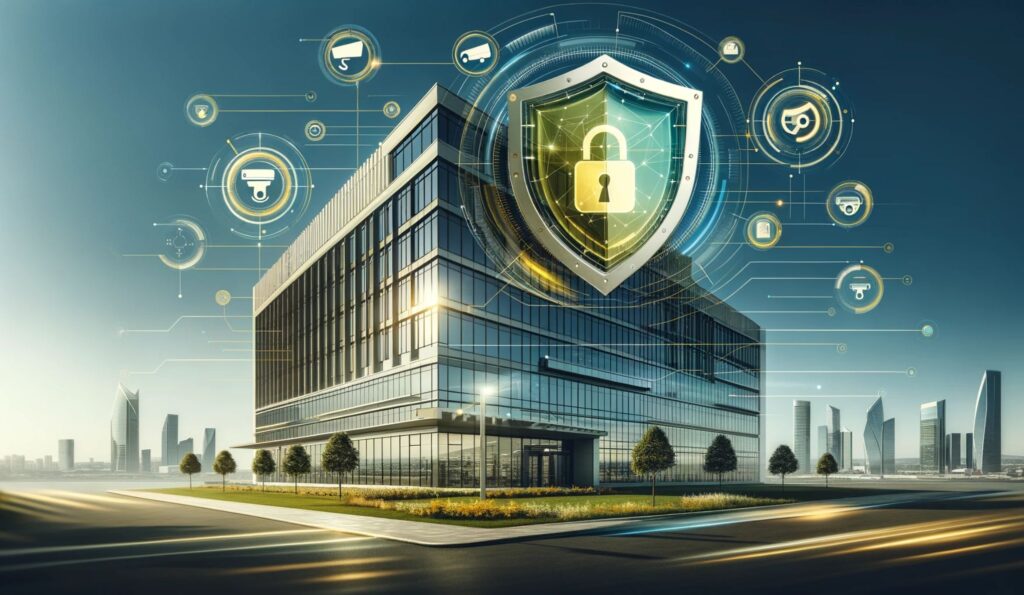In an increasingly complex and interconnected world, security is paramount. Whether you are responsible for safeguarding a residential property, a commercial establishment, or an entire city, the task of ensuring safety has evolved into a multifaceted challenge. To effectively address this challenge, it is crucial to understand the importance of integrating multiple security systems into a cohesive and comprehensive strategy.

The Changing Landscape of Security
Traditionally, security was often approached as a series of individual, standalone systems. Closed-circuit television (CCTV) cameras monitored premises, access control systems regulated entry and exit, and alarm systems alerted us to potential threats. While these systems provided a degree of security, they operated in isolation, limiting their effectiveness in responding to dynamic and sophisticated threats.
Today, the security landscape has undergone a profound transformation. Threats have become more sophisticated, ranging from physical intrusions to cyberattacks, and they often occur simultaneously. Criminals and malicious actors exploit vulnerabilities wherever they find them, demanding a holistic approach to security.
The Need for Integration
Imagine a scenario where a fire alarm is triggered in a building, but the security cameras are unable to verify the source of the alarm. Meanwhile, unauthorized access occurs through a vulnerable entry point, and the intrusion detection system fails to communicate with the access control system. In such situations, isolated security systems not only impede the resolution of incidents but also increase the risk to life, property, and sensitive information.
This highlights the pressing need for integrating multiple security systems. Integration involves the seamless coordination and communication between various security components, ensuring they work together harmoniously to enhance overall safety. The benefits of integration are manifold, addressing the shortcomings of isolated systems:
Enhanced Situational Awareness
Integrated security systems provide a unified view of your environment. By combining data from CCTV cameras, access control systems, and other sensors, you gain real-time situational awareness. This allows you to quickly assess threats and respond proactively, reducing the potential impact of security incidents.
Improved Response Times
In a crisis, time is of the essence. Integrated systems enable automated responses based on predefined rules. For example, when an unauthorized access attempt is detected, the access control system can trigger immediate alerts and lock down affected areas, simultaneously notifying security personnel. This swift response minimizes the window of opportunity for threats to escalate.
Cost Savings and Efficiency Gains
While integrating security systems may require an initial investment, it often results in long-term cost savings. Efficiency gains are achieved through automation, reducing the need for manual monitoring and intervention. Additionally, integrated systems can help avoid redundant hardware and streamline maintenance.
Scalability and Future-Proofing
As security needs evolve, integrated systems offer scalability and adaptability. You can easily expand or upgrade your security infrastructure to address emerging threats or accommodate changes in your environment. This future-proofing ensures that your security investments remain effective over time.
Understanding Security Systems
Before delving further into the intricacies of integrating security systems, it’s essential to have a solid grasp of the various types of security systems at your disposal. Each of these systems serves a specific purpose and contributes to the overall safety and security of your environment.
Closed-Circuit Television (CCTV)
CCTV systems consist of cameras strategically placed to monitor and record activities in and around a designated area. These cameras capture video footage, which can be viewed in real-time or stored for later analysis. Modern CCTV systems often employ advanced features such as motion detection, night vision, and remote access, making them invaluable tools for surveillance and incident investigation.
Access Control Systems
Access control systems are designed to regulate and manage entry to secured areas. They use a combination of technologies, including keycards, biometrics, or PIN codes, to authenticate individuals seeking access. Access control systems grant or deny entry based on predefined permissions, ensuring that only authorized personnel can enter specific locations.
Alarm and Intrusion Detection Systems
Alarm and intrusion detection systems are designed to detect unauthorized access or security breaches. These systems use sensors, such as motion detectors, glass break detectors, and door/window contacts, to trigger alarms when unusual activity is detected. They can be integrated with other security systems to initiate automated responses or alert security personnel.
Fire Detection and Suppression Systems
Fire detection and suppression systems are critical for identifying and responding to fire hazards. Smoke detectors, heat sensors, and fire alarms are commonly used components of these systems. In addition to alerting occupants to the presence of a fire, some systems also include automatic fire suppression measures, such as sprinklers or gas-based extinguishing systems.
Perimeter Security Systems
Perimeter security systems focus on protecting the outer boundaries of a property or facility. These systems can include physical barriers like fences and gates, as well as technology-based solutions like perimeter sensors and video surveillance. By fortifying the perimeter, they act as the first line of defense against intruders.
Cybersecurity Measures
In an increasingly digital world, cybersecurity is an integral component of overall security. It involves safeguarding computer systems, networks, and data from cyber threats such as hacking, malware, and data breaches. Cybersecurity measures include firewalls, encryption, intrusion detection systems, and regular security assessments.
Environmental Monitoring Systems
Environmental monitoring systems help protect against non-human threats such as flooding, temperature extremes, or chemical leaks. These systems use sensors to detect environmental changes and can trigger alerts or automated responses to mitigate potential damage.
The Need for Integration
As we’ve established, security systems have evolved to encompass a wide range of functions, each designed to address specific threats and vulnerabilities. However, relying solely on standalone security systems can result in critical gaps and inefficiencies. This section explores why integration is essential in today’s security landscape.
Limitations of Standalone Systems
Standalone security systems, while effective in their individual domains, operate independently. This independence can lead to several limitations:
- Isolated Data: Each system generates its own data and operates in isolation, making it challenging to correlate information in real-time during security incidents.
- Delayed Responses: Communication between standalone systems is often slow or nonexistent. This can lead to delayed responses to security breaches, increasing the potential for harm or loss.
- Inefficient Resource Allocation: Standalone systems may trigger false alarms, leading to unnecessary responses by security personnel. Conversely, they may miss critical events due to a lack of context.
- Management Complexity: Managing multiple standalone systems can be time-consuming and prone to human error, as operators need to monitor and coordinate each system separately.
The Rise of Complex Threats
Modern security threats rarely conform to a single category. They often involve a combination of physical and digital elements. For example, a cyberattack on an organization’s network might precede a physical break-in to steal sensitive data. Such multifaceted threats require a holistic approach that addresses all potential vulnerabilities.
Real-World Scenarios
| Real-World Scenarios | Integration Benefits |
|---|---|
| Data Center Security | – Integrated system detects fires and triggers automated responses, such as shutting down servers, activating sprinklers, and locking unauthorized access. |
| Smart Cities | – Integration links traffic cameras, emergency response, and public safety agencies for efficient traffic management and rapid accident response. |
| Healthcare Facilities | – Integration controls access to sensitive areas, while environmental sensors monitor for hazards like gas leaks and temperature fluctuations. |
In this table, the real-world scenarios are listed on the left, and the corresponding benefits of security system integration are presented on the right. This format allows for a concise and organized presentation of the information.
Benefits of Integration
In the world of security, the integration of multiple systems brings forth a host of compelling benefits, transforming the way organizations safeguard their assets, people, and information. These advantages encompass enhanced situational awareness, improved response times, cost savings, and efficiency gains, as well as scalability and future-proofing.

Enhanced Situational Awareness
Integration fosters a holistic view of your security landscape, transcending the limitations of siloed systems. By amalgamating data from diverse sources such as CCTV cameras, access control logs, and environmental sensors, you gain real-time situational awareness. This consolidated perspective empowers you to detect threats promptly and respond proactively. Picture a scenario where a breach is detected by an access control system; simultaneous access to live camera feeds allows for immediate visual confirmation of the incident, significantly enhancing the ability to assess and respond to the threat effectively.
Improved Response Times
Integration doesn’t just connect systems; it orchestrates automated responses based on predefined rules. This is where the advantages of integration become truly pronounced. When an anomaly is identified, integrated systems can trigger swift, automated responses, minimizing the response time window. For example, an unauthorized access attempt might trigger immediate alerts while simultaneously initiating lockdown procedures and notifying security personnel. This orchestrated response mechanism dramatically reduces the potential for security incidents to escalate.
Cost Savings and Efficiency Gains
While the initial investment in integrating security systems may raise eyebrows, the long-term benefits are often marked by cost savings and efficiency gains. Automation, a central component of integration, plays a pivotal role in achieving these financial advantages. By streamlining and automating routine tasks, organizations can reduce the need for continuous manual monitoring and intervention. This not only cuts down on labor costs but also enhances overall efficiency. Furthermore, integrated systems can eliminate redundancy in hardware and streamline maintenance, further contributing to cost-effectiveness.
Scalability and Future-Proofing
In a dynamic security landscape, the ability to adapt and scale is paramount. Integrated systems offer the versatility to accommodate changing needs and emerging threats. Whether it’s expanding security infrastructure to address evolving risks or integrating new technologies to bolster security measures, scalability and future-proofing are integral components of integrated systems. Such adaptability ensures that an organization’s security investments remain potent and effective over time, safeguarding against obsolescence and enabling the rapid incorporation of cutting-edge security technologies.
These benefits, when harnessed through effective integration, propel organizations toward a more robust, agile, and responsive security posture. By embracing integration, organizations can confidently navigate the intricate web of modern security challenges, ultimately achieving a safer and more secure environment for all stakeholders.
Challenges and Considerations
While the benefits of integrating security systems are substantial, it’s essential to acknowledge the challenges and considerations that can arise during the integration process. Understanding these challenges will help you plan effectively and navigate potential obstacles to achieve a successful integration.
Compatibility Issues
Compatibility issues are a recurring challenge in the integration of diverse security systems. These issues arise because security systems often come from various manufacturers and employ different technologies, communication protocols, and hardware components. Ensuring that these systems can work harmoniously together can be complex. For instance, hardware and software compatibility challenges may emerge when attempting to connect systems that require specific components or software versions. Overcoming compatibility challenges often necessitates careful planning and selecting integration solutions that bridge these gaps.
Interoperability
While compatibility focuses on the ability of systems to work together, interoperability delves into the effectiveness of their cooperation. Even if systems are technically compatible, they may not communicate or share data effectively, which can hinder the integration’s success. Interoperability challenges arise when data exchange formats and protocols vary among systems, leading to difficulties in standardization. In complex security environments with numerous integrated systems, managing interactions between them can become intricate. This is particularly true if systems were not originally designed with integration in mind. Successful integration efforts must prioritize the establishment of standardized data formats and leverage application programming interfaces (APIs) and middleware platforms to facilitate communication between different security systems.
Cybersecurity in Integration
Cybersecurity is an integral aspect of integrating diverse security systems, especially in an increasingly connected world. The integration process can inadvertently introduce cybersecurity risks, which, if not properly managed, can compromise the security of the entire network. Security systems that were once isolated may now become potential entry points for cyberattacks when interconnected. To address these risks, organizations must focus on:
- Vulnerabilities: Integrated systems may expose new vulnerabilities that malicious actors can exploit. A weakness in one system could potentially lead to a breach across the entire integrated network.
- Data Security: The sharing of data between systems demands robust data security measures. Unauthorized access to sensitive data can have severe consequences, emphasizing the need for strong encryption and access controls.
- Access Control: Effective access control and user permissions must be meticulously managed to prevent unauthorized individuals from gaining access to integrated systems.
Addressing these challenges and considerations is pivotal in ensuring the security, reliability, and effectiveness of integrated security systems. The ability to navigate these obstacles successfully can significantly contribute to the overall safety and security of an organization or environment.
Technology Trends and Future Outlook
The world of security system integration is continuously evolving, driven by advancements in technology and the ever-changing nature of security threats. Staying informed about these trends is crucial for organizations seeking to maintain optimal safety and security.
Emerging Technologies in Security Integration
Emerging technologies, particularly AI and IoT, are reshaping the way security systems operate. AI, with its ability to process vast amounts of data and make real-time decisions, is revolutionizing security analysis and response. Through AI-powered algorithms, security systems can now predict threats, analyze behavioral patterns, and trigger automated responses. This predictive and proactive approach is a game-changer in identifying and addressing security risks before they escalate.
Meanwhile, the Internet of Things (IoT) has introduced a plethora of connected devices and sensors into the security ecosystem. These devices can seamlessly integrate into security systems, providing real-time data on environmental conditions, occupancy, and more. IoT extends the reach of security by enabling remote monitoring and improving energy efficiency. The integration of these technologies offers a more dynamic and data-driven security landscape.
Evolving Security Systems
The landscape of security systems is evolving at a rapid pace. Traditional systems like CCTV cameras, access control, and alarm systems are no longer isolated entities. They are now part of a broader interconnected network, communicating and sharing data to enhance security. Centralized monitoring, automated responses, and advanced analytics are becoming the norm, providing security personnel with unprecedented insights and tools for rapid decision-making.
Predicting Future Developments
Looking ahead, the future of security system integration holds exciting possibilities. As technology continues to advance, we can anticipate several key developments:
- Enhanced Automation: Automation will play an increasingly significant role in security systems, with AI-driven algorithms taking on more decision-making tasks. This will lead to even faster response times and greater efficiency in managing security incidents.
- Biometric Innovations: Biometric authentication methods, such as facial recognition and retina scanning, will continue to evolve, further enhancing access control systems. The integration of biometrics and multi-factor authentication will bolster security.
- Blockchain for Data Security: Blockchain technology may gain prominence for securing critical security data, access logs, and identity information. Its immutable and transparent nature makes it an attractive option for ensuring data integrity.
- Advanced Environmental Monitoring: IoT sensors will become more sophisticated in monitoring environmental conditions. This will be especially important for sectors like healthcare and critical infrastructure, where environmental factors are critical to security.
Case Studies

Healthcare Facility Security
Case Study 1: XYZ Hospital
- Challenge: XYZ Hospital faced challenges in managing access to sensitive patient areas, ensuring patient safety, and responding swiftly to security incidents.
- Integration Solution: The hospital integrated its access control system with its CCTV surveillance system. Access permissions were tied to patient records, allowing staff to access only the areas relevant to their duties.
- Results: The integrated system improved patient safety and staff accountability. Incidents, such as unauthorized access to medication storage, were quickly detected and addressed. Response times to security incidents were significantly reduced.
Corporate Campus Security
| Case Study 2: ABC Corporation |
|---|
| Challenge |
| ABC Corporation sought to enhance security across its corporate campus, which included multiple buildings and entrances. |
| Integration Solution |
| ABC Corporation integrated its access control, CCTV, and perimeter security systems. The system provided centralized monitoring, automated visitor management, and real-time alerts for breaches. |
| Results |
| The integrated solution improved overall security and reduced the need for on-site security personnel. Security staff could quickly respond to incidents across the campus, and access control measures were streamlined, enhancing employee convenience. |
Smart City Integration
Case Study 3: Metropolis Smart City
- Challenge: Metropolis aimed to create a safer and more efficient urban environment by integrating various city services and security systems.
- Integration Solution: Metropolis integrated traffic management systems, emergency services, public transportation, and public safety cameras. The integrated system provided real-time traffic updates, facilitated emergency responses, and enhanced public safety.
- Results: Metropolis achieved significant reductions in traffic congestion, faster emergency response times, and a notable drop in crime rates. The integrated system became a model for other smart cities worldwide.
These case studies demonstrate that security system integration offers tangible benefits, including enhanced safety, improved response times, and operational efficiencies. While each case is unique, the overarching lesson is clear: integration is a powerful tool for achieving optimal safety and security in a wide range of contexts.
Conclusion
The integration of multiple security systems is no longer a luxury but a necessity in the modern world. As security threats become more complex, organizations must adapt by adopting a holistic approach to safety and security. This comprehensive guide has explored the importance of integration, its numerous benefits, challenges to consider, best practices to follow, and emerging technology trends.
By embracing integration, organizations can enhance situational awareness, improve response times, achieve cost savings, and future-proof their security infrastructure. Success in security system integration requires careful planning, meticulous execution, and a commitment to ongoing maintenance and improvement.
As you embark on your journey to integrate multiple security systems, remember that the safety and security of your environment depend on your ability to adapt and innovate. By staying informed about emerging technologies and learning from successful case studies, you can build a robust and resilient security infrastructure that protects what matters most.








